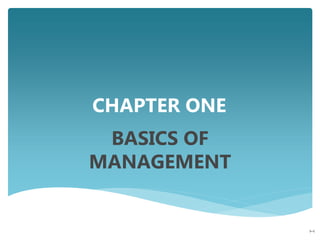Management involves planning, organizing, leading, and controlling organizational resources and activities. The key functions of management include planning, organizing, staffing, leading, and controlling. Planning involves setting goals and determining how to achieve them. Organizing involves structuring work activities and assigning responsibilities. Leading involves motivating and influencing employees. Controlling involves monitoring performance and taking corrective actions when needed. Effective management aims to achieve organizational goals efficiently and effectively through coordinating the efforts of people and other resources.
























































